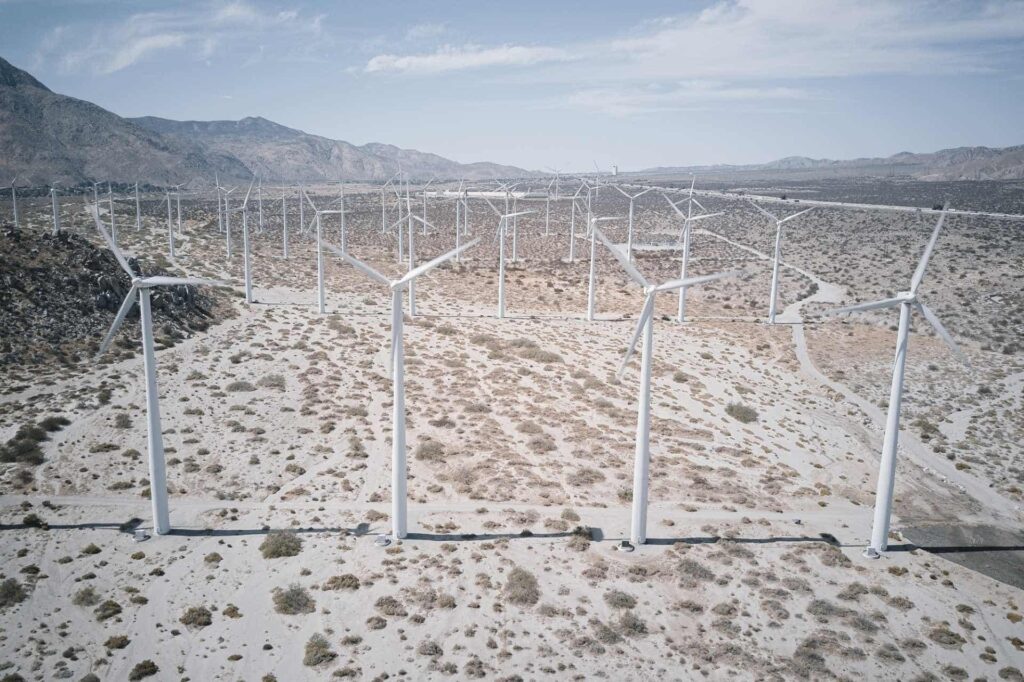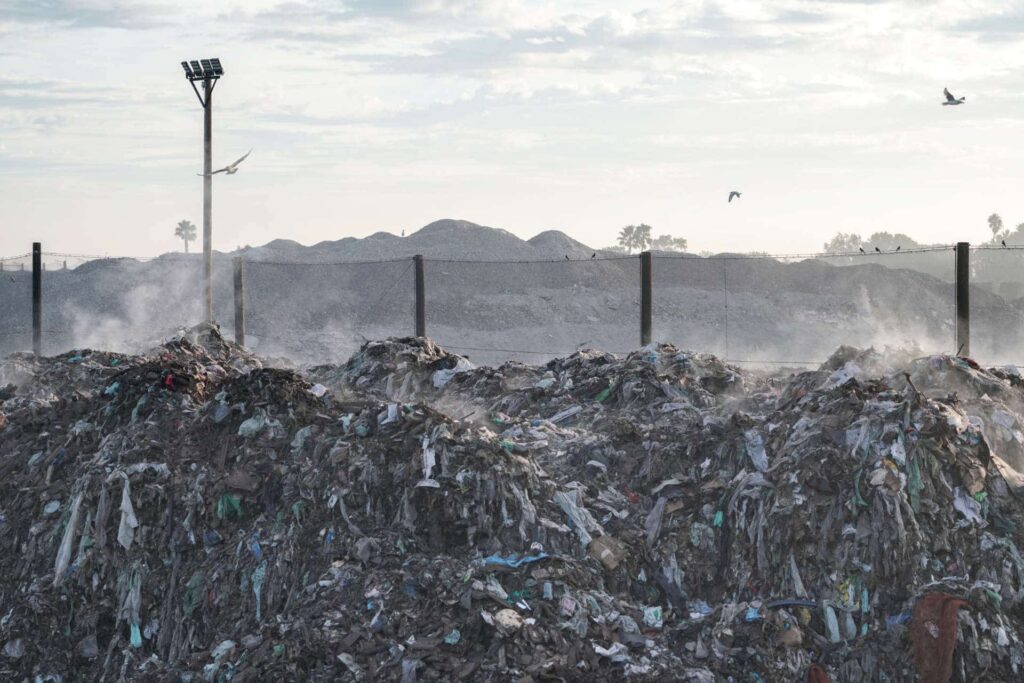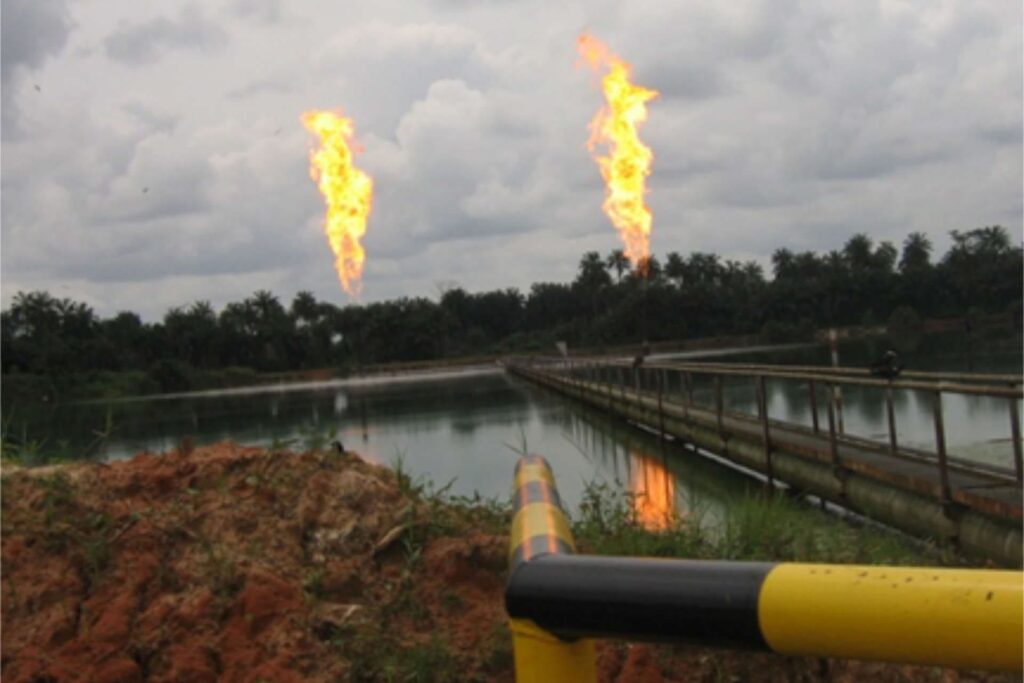
GHG Project Accounting helps us in creating, reporting, monitoring, and assessing greenhouse gas reduction projects and is vital for taking climate action.
The GHG Protocol and other standards offer us a framework for assessing greenhouse gas (GHG) projects which can be used for carbon offsets and other means.
In this ultimate guide to GHG project accounting 2026, we will take a deep dive into the most important concepts of project accounting. We go through the steps necessary to report and account for GHG reductions and give you actionable advice on how you can either create your own GHG projects or analyze those available on the market.
Let’s get started!
What is GHG Project Accounting?
GHG Project Accounting helps us in creating, reporting, monitoring, and assessing greenhouse gas reduction projects and is vital for taking climate action. It can be used to create carbon offset programs as an essential part of voluntary corporate decarbonization strategies.
The goal of greenhouse gas projects, carbon offsets, and other climate actions is to lower overall greenhouse gas emissions and increase carbon sequestration from the atmosphere. However, those reductions should create meaningful change in comparison to less favorable scenarios.
By following GHG project accounting principles, we can make different programs comparable and offer stakeholders and regulators an intuitive way of assessing our corporate sustainability strategies.
Its foundation can be found in the GHG Protocol’s Project Accounting standard which we will look at next.

GHG Protocol for Project Accounting
The GHG Project Protocol provides a framework for creating, quantifying, and reporting the GHG emission changes from climate change mitigation projects (GHG projects). It was first released in 2004 and aims at providing the de-facto standard for GHG project accounting.
The GHG Protocol offers a number of standards for accounting for greenhouse gas emissions on an organizational and governmental level.
While the Corporate Standard is used to account for and report GHG emissions along a company’s value chain, the Project Accounting Standard can be used by project developers and those purchasing offset credits to do the same for GHG reduction projects.
Its three main objectives are to:
- Propose principles, methods, and a unified approach to reporting GHG reductions from projects
- Provide GHG project accounting concepts and principles
- Establish one platform for different project-based GHG programs
It is divided into 2 parts, the first one providing a background, concepts, and core principles of GHG project accounting, and the other one defining standards for GHG reduction accounting and reporting.
GHG Project Accounting Concepts
In GHG project accounting, we are generally concerned with three aspects: Overall greenhouse gas emissions, the planned project and everything it involves, and the reference cases or baseline.
Before we can get into the nitty-gritty details of how to account for and report GHG projects, let’s look at the most important concepts you should know.
If you want to refresh your knowledge on other important terminology in carbon footprint management and ESG, hop on over to our extensive glossary!
GHG Source/Sink
GHG sources are all processes that emit greenhouse gases into the atmosphere, while sinks remove them.
A typical source is burning fossil fuels while trees or our oceans are natural GHG sinks.
GHG Project
A GHG project aims to reduce greenhouse gas emissions through various means, remove carbon from the atmosphere, or otherwise store it.
This could be building a wind turbine to produce clean energy or switching fuel types in your company’s car fleet.
Project Activity
A project consists of one or more project activities which are the specific actions aimed at introducing the change in emissions.
In the case of the wind power project, this might be the process of constructing the turbine.
GHG Effects
GHG Effects are all the changes in greenhouse gas emissions that are caused directly or indirectly by any project activity. We divide these further into primary effects and secondary effects.
Primary Effects are intended changes in GHG emissions, removals, or storage of greenhouse gases. Think of these as the “goals” or “targets” of your GHG project such as intentionally reducing methane emissions in an energy generation plant.
Secondary Effects are any unintended emission changes that may happen as a consequence or byproduct of our GHG project. These can be both positive (e.g. when the project removes additional carbon from the atmosphere) or negative (e.g. emissions caused by cement production for a renewable energy project).
Usually, these are small but can make a difference in certain scenarios and must be accounted for. They can come in the form of one-time or ongoing upstream and downstream effects.
GHG Assessment Boundary
All primary and secondary effects within a GHG project form the GHG assessment boundary.
Baseline Scenario
The baseline scenario is the reference case to which we compare our GHG project and its activities. It describes how things would go if we did not implement any climate action. This could be the status quo (“change nothing“) or any alternative scenario.
Baseline Emissions
Baseline emissions are the GHG emissions from our Baseline scenario. We quantify our project-based GHG emissions relative to these.

Baseline Candidates
Baseline Candidates within a GHG project are any alternative measures within the assessment boundary that could provide similar products or services as the project activity we’re analyzing. They together form the Baseline Scenario.
GHG Project Accounting Principles
GHG Project Accounting according to the GHG Protocol standard follows six guiding principles: Relevance, Accuracy, Completeness, Consistency, Conservativeness, and Transparency.
These principles are similar to those found in the Corporate Standard of the GHG Protocol, with the addition of “conservativeness“.
Additionality in GHG project accounting
Additionality means GHG projects may only be sold as offset credits if they were created with the sole purpose of reducing GHG emissions relative to a Baseline Scenario. A project is additional if it did not exist without the incentive to sell it as carbon offset credits.
Additionality is a complex issue and there is no consensus in the world as to how exactly it is achieved or even how the term is interpreted.
The key concepts to understand here are:
1. Quantifiable GHG reduction benefits
Additionality quantifies additional greenhouse gas reduction benefits from GHG projects relative to our selected Baseline. In other words, the baseline scenario and project activity must not be identical.
2. Carbon Credit Sales as Incentive
The incentive of a GHG project -and subsequently its funding – must be the use of its reduction benefits as carbon offset credits. If the project would have happened anyway, this is great but those reductions may not be further sold as carbon credits.
Example
Common examples of additional projects are reforestation projects by NGOs.
Trees remove carbon and other greenhouse gases from the atmosphere and are formidable GHG sinks. Thus, planting trees can offset GHG emissions elsewhere.

If an organization plants a number of trees that are financed solely by purchases of offset credits from other companies this is a good example of an additional GHG project.
Without the financial incentive of the offset program, the reforestation project and the reduction benefits that come with it, would not have happened.
Types of Baseline Procedures
Baseline procedures are used to estimate GHG emissions for our Baseline Scenario. The Project-specific procedure uses a reference case specific to our project activities, while the Performance Standard Procedure takes into account all Baseline Candidates.
For each GHG project, we have the option to use one of two types of Baseline Procedures. Let’s look at these options now.
Project-Specific Procedure
The project-specific procedure estimates baseline emissions by creating a baseline scenario for each project activity individually. We analyze potential barriers for each baseline candidate and finally derive the emissions for each baseline scenario.
Use this procedure if you cannot find sufficient performance data on each alternative or in less uniform market conditions.
The project-specific procedure follows three steps:
- Assess any barriers
- Select the baseline scenario
- Calculate baseline emissions
We will look at how to implement these with an example in the next section.
Performance Standard Procedure
In the performance standard procedure, we use the GHG emission rates of all identified baseline candidates to create a unified performance standard as the reference case. It can then be used to compare any number of similar project activities against it.
This is best for uniform markets and a large number of similar offerings.
The performance standard procedure follows five steps:
- Select performance metrics
- Production-Based
- Time-Based
- Calculate each candidate’s GHG emission rate
- Calculate GHG emission rates for different stringency levels
- Most stringent
- Weighted mean
- Median
- Percentile
- Select stringency level
- Calculate Baseline Emissions
We will look at how to implement these with an example in the next section.
Production-based vs Time-based
Throughout the performance standard procedure, calculations are based either on production-based or time-based metrics.
Production-based standards are bests suited for energy efficiency and generation, or general industrial processes.
The performance metric will look something like
Metric = Inputcandidate / Products
The input should be relevant to the project, i.e. covered by the primary effect of it.

Time-based standards are used for biological processes for storing and removing carbon, waste, or fugitive emissions.
Performance metrics are usually of type:
Metric = Emissions / (Baseline candidate size * time)
We may exchange emissions for removals in the formula above.
Guide to GHG Project Accounting
Now that we have looked at the basic concepts and terminology of GHG project accounting, let’s look at the steps involved in accounting, reporting, and monitoring such projects.
The six-step process for accounting and reporting GHG reductions from a GHG project comprises:
- Define GHG Assessment Boundary
- Select Baseline Procedure
- Identify Baseline Candidates
- Estimate Baseline Emissions
- Project-Specific Procedure
- Performance Standard Procedure
- Monitor and Quantify GHG Reductions
- Report GHG Reductions
We will go through each step and also look at an example so you can copy this approach.
1. Define GHG Assessment Boundary
In the first step, we identify a GHG Assessment Boundary based on our intended primary GHG effects and the secondary side effects that come with it.
Use these five steps to define the boundary:
- Identify all project activities in the GHG project
- Define all intended primary effects
- Identify secondary effects associated with the project
- Analyze and quantify all secondary effects
- Form the Assessment Boundary from primary effects and significant secondary ones
While project activities and its primary effects are usually easy to identify (after all, they’re the reason for the project in the first place), secondary effects can be complex. Look at all steps involved in making the project a reality and analyze its value chain.
Let’s say we plan a landfill gas project that converts emitted methane from combustion and fugitive emissions to electricity.

We install equipment to capture emitted methane (CH4) at the landfill and subsequently generate electricity from it. These are our two project activities.
The primary effects are 1) a reduction in waste emissions and 2) a reduction of combustion emissions from grid-connected electricity since we don’t need to burn fossil fuels in this case.
Some negative secondary effects could be the emissions from building the gas capture equipment, installing and maintaining it on-site, or additional land use if the landfill must be expanded to host the facilities.
A positive secondary effect might be that the additional power to the grid replaces the need for an additional power generation facility at a different place in the region.
| Project Activity | Primary Effects | Secondary Effects |
|---|---|---|
| Capture methane from landfill waste | Reduce waste emissions | Building methan capture equipment, land-use |
| Generate electricity from methane | Displace GHG emissions from grid-connected electricity plants | Maintaining power generator, replace need for additional facility |
Not all of these effects are significant so include only those which are.
The primary effects and significant secondary effects form the assessment boundary.
A carbon footprint management software like Reegy can help you quantify these GHG effects.
2. Select Baseline Procedure
As we saw above, there are two Baseline Procedures available, the project-specific and the performance standard method.
Select the project-specific procedure if you have a limited number of baseline candidates or reliable GHG emissions data for them is had to obtain.
On the other hand, if you implement several similar project activities or have a hard time getting accurate project activity data, the performance standard procedure is usually better suited.
Moreover, if the project should be kept confidential, the performance standard procedure does not require you to disclose the project details like a project-specific one does.
3. Identify Baseline Candidates
Baseline candidates should serve as equal alternatives to the project. Use these steps to identify them:
- Define the product or service provided by the project
- Identify any possible types of baseline candidates
- Determine geographic area & timeline
- Define other selection criteria for the candidates
- Identify representative baselines candidates from final list
Your project activity and the primary effects you defined in the assessment boundary selection step are usually the best starting point for finding baseline candidates.
Determining the geographic area and temporal range is important as you must compare a project with relevant alternatives in the same region with equivalent time frames.
We usually start on a national level and 5-7 years which includes the installation, implementation, and potentially end-of-life of the project. Choose whichever is most appropriate in your case.
For our landfill gas project, this would be the country you’re in with a 15-20 year time frame, as methane capture facilities usually run for many years.
You can choose any other selection criteria that are appropriate to find a suitable baseline. This often includes legal requirements (“which alternatives will receive government clearance in the same timeframe“) and common practice (“is the proposed technology common in this market“).
You then choose from a list of final baseline candidates those alternatives which represent common practice in your sector.
Our example landfill project has two main project activities, capturing methane as part of an LFG-to-energy project and generating electricity from it.
Here are some baseline candidates for the first project activity:
| Baseline Scenario Alternative | Description |
|---|---|
| Project activity | Capture methane for electricity generation |
| Baseline Candidate 1 | Flaring methane instead of using it |
| Baseline Candidate 2 | Relocate landfill |
| Continuation of activities | Do nothing |
4. Estimate Baseline Emissions
Based on the baseline candidates from the last step, we pick a baseline scenario and determine its emissions.
Remember, the baseline scenario is the reference case to our project activity that we compare our GHG reductions to. The goal here is to be as conservative as possible and determine the lowest possible GHG emissions from our baseline.
In Step 2, we selected the appropriate Baseline Procedure to be used. Let’s look at each of them and how they work.
If you find this step to be challenging, it might be time to check out a sustainability management software like Reegy that takes the heavy lifting off of your shoulders.
Let’s now look at the two approaches to estimating Baseline Emissions:
Project-Specific Procedure
- Assess any barriers
- Select the baseline scenario
- Calculate baseline emissions
1. Assess any barriers
Barriers are anything that could prevent the implementation or continuation of the project and its alternatives. They can be financial (high costs), infrastructure-related (lack of supply), cultural (lack of social acceptance of technology), or otherwise specified.
Perform a comparative assessment of any applicable barriers and their impact.
For the landfill gas project, potential barriers may be the high costs of building the plant, low efficiency of some capture technologies, or public resistance to increasing the landfill area to accommodate the facilities.
2. Select the baseline scenario
Explain how the barriers from step 1 can be overcome and select a baseline scenario based on your results.
A cumulative impact ranking matrix can help put the barriers and their significance into perspective. Here is an example for the landfill project:
| Baseline Scenario Alternative | Barrier 1 (Cost) | Barrier 2 (Infrastructure) | Barrier 3 (Social) | Rank |
|---|---|---|---|---|
| Project Activity | High | Medium | – | (2) Medium barriers |
| Baseline Candidate 1 | Medium | High | Medium | (3) Medium barriers |
| Baseline Candidate 2 | High | High | Medium | (4) Highest barriers |
| Continuation of current activities | – | – | Low | (1) Lowest barriers |
A software solution like Reegy can carry out a barrier assessment analysis for you and improve the baseline selection process.
If you cannot directly identify the baseline from your barriers comparison, you have two choices:
a) Pick the most conservative alternative which either has the lowest GHG reductions or highest GHG removals compared to the rest or
b) Use a net-benefit assessment of each of the baseline candidates
Like before, a matrix that lists baseline candidates, their barriers, benefits, and potential rankings is of great help in choosing the baseline scenario. As always, justify and explain your choice.
For example, flaring of the methane instead of using it in baseline candidate 1 incurs costs and the gas cannot be sold. This leads to net negative benefits of this alternative.

However, if we find that revenues from our produced electricity are lower than the cost incurred by capturing the methane, our project also has negative net benefits.
This would then be a perfect example of how “do nothing” would be an appropriate baseline scenario, as this has neither positive nor negative net benefits.
3. Calculate baseline emissions
With the baseline scenario, its candidates, and evaluation of impacts done, we estimate the baseline emissions.
It is often useful to specify the results in GHG emissions per unit of product or service. Emission rate factors can be applied in most cases.
Reegy uses a large number of up-to-date databases to make calculations of baseline emissions a breeze.
Performance Standard Procedure
- Select performance metrics
- Production-Based
- Time-Based
- Calculate each candidate’s GHG emission rate
- Calculate GHG emission rates for different stringency levels
- Most stringent
- Weighted mean
- Median
- Percentile
- Select stringency level
- Calculate Baseline Emissions
1. Select Performance Metrics
The first step in deriving a performance standard to calculate baseline emissions is to specify appropriate performance metrics for the baseline candidates. Here we only identify the units of measure before converting them to GHG emission rates in the following step.
A production-based metric for our LFG project could be the tonnes of coal / kWh electricity generated for baseline candidates. A possible time-based performance metric for our sample LFG project could be tonnes of methane / m3 landfill waste / month.
2. Calculate each candidate’s GHG emission rate
For production-based performance standards, we convert the performance rate to GHG emission rates for each baseline candidate.
Direct GHG emissions from inputs are usually simple to determine with the help of default emission factors or directly. Indirect emissions are harder to track, as we need to take into consideration location and time, as well as various emission factors.
Time-based performance standards require meaning GHG emissions for each baseline candidate over a specified time period, as well as determining their size and capacity.
3. Calculate GHG emission rates for different stringency levels
The stringency of a performance standard compares its GHG emission rate relative to the emission rates of all baseline candidates.
- Most stringent
- Weighted mean
- Median
- Percentile
We use weighted emission rates of the baseline candidates to prevent skewed results from smaller candidates.
Here are the emission rates for each stringency level:
| Stringency Level | Calculation method |
|---|---|
| Most stringent | GHG emission rate of the best-performing baseline candidate (usually the lowest emissions or highest removals). |
| Weighted mean | Sum of each baseline candidates Emission rate * product quantity / total number of baseline candidates |
| Median | Use statistical methods to determine GHG emission rate median |
| Percentile | Use statistical methods to determine GHG emission rate for a given percentile |
Describing each calculation step is beyond this guide. You can find examples of stringency level formulas at ghgprotocol.org.
Reegy’s Project Accounting module automatically derives all relevant stringency levels of your GHG project so you can focus on making an impact!
4. Select stringency level
The final step is to choose an appropriate stringency level from the ones obtained previously.
As a rule of thumb, the stringency level should have a performance rate that’s better than the weighted mean GHG emission rate.
Stringency & Additionality
In some cases, it can be helpful to lower/raise stringency levels selectively. E.g. too demanding ones can be good to filter out non-additional sources, however, may eliminate potentially less optimal yet additional projects from consideration.
Test out different levels and see how it affects your choices and results. Of course, it is possible to apply different levels at different steps along the project accounting line.
Calculate Baseline Emissions
The last step is of course to calculate the baseline emissions just like we did in the project-specific procedure.
For production-based standards, we multiply project activity production levels by the performance standard emission rate, while for the time-based we use the size and capacity of the project activity and the length of time.
5. Monitor and Quantify GHG Reductions
This step encompasses monitoring and quantifying GHG emissions from all GHG sources and sinks related to the primary and secondary effects within the assessment boundary.
Recall that we defined all of these in the steps above.
We take the following steps:
- Create a monitoring plan
- Project activity emissions
- Baseline parameters
- QA/QC measures
- Quantify GHG reductions in the GHG project
- Identify time period for quantification
- Quantify GHG reductions based on data
1. Create a monitoring plan
In our monitoring plan, we describe how we monitor the GHG reductions and what we do with the data.
Project activity emissions are best measured directly or indirectly and are usually easiest to obtain.
For example, in our landfill gas project, we can directly measure methane emissions processed in our facility.
Uncertainty
Accounting for uncertainty is crucial when following good accounting principles. This is especially true when we gather data from third parties. Software like Reegy’s Eco Hub automatically does this for you.
Monitoring data of baseline emissions increases the credibility of your GHG project. In some cases, new or more accurate data may lead to a reconsideration of the baseline scenario.
Quality assurance and quality control measures are important when using GHG emissions data. Regularly carry out site audits, data control, services, and technical quality control. Our Reegy Eco Hub software is regularly verified by third parties for data control and integrity.
2. Quantify GHG reductions in the GHG project
Now it is time to quantify the reductions in greenhouse gases by the project. This involves setting a time period over which this will happen, as well as the actual calculations.
Look out for changes in the economic, political, or other conditions that could influence the project.
Uncertainty will play a big role when looking at the time length.
Once you have determined the time period, use all the data you have now to quantify the GHG reductions. You can find a list of formulas for emission reductions, biological processes, and other project activities in the GHG Project Accounting standard.
6. Report GHG Reductions
The final step in GHG project accounting is to prepare reports of the project reductions for third parties and stakeholders.
A GHG project report should include:
- Project name
- Project description
- Information on technical, administrative, and operational details
- Assessment Boundary
- Baseline emissions for each project activity
- Primary effects of each activity
- Baseline candidates
- Estimated GHG reductions
- Monitoring plan
- GHG reductions report
- …
Adjust your report to accommodate the recipient. Regulators will need technical specifications and details, while investors and stakeholders might be more interested in the financial aspects and carbon offsets data.
At Reegy, we know that preparing such reports can be difficult and time-consuming. That’s why we built the Reegy Eco Hub which includes a GHG reporting module for automatic GHG reduction reporting.
Our Software-as-a-Service solution keeps track of all the data from your GHG projects so you can focus on what really matters: Reducing greenhouse gas emissions and stopping climate change.
Reegy is a complete software solution for ESG & Carbon Footprint Management. Our Reegy Eco Hub enables enterprises, financial institutions and governmental organizations to manage their climate action in one central location along the entire value chain. Track, measure, reduce, and offset your carbon emissions, disclose them to regulators, stakeholders, and customers and lead your company to Net Zero on autopilot!